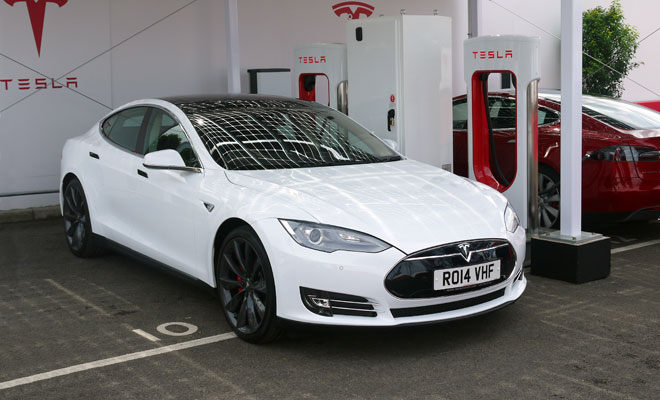by Lem Bingley 
Toyota today unveiled the production version of its FCV or Fuel Cell Vehicle, which will be sold in Japan from April next year. In its home market the hydrogen-powered Toyota will cost the equivalent of about £40,000, though export prices remain to be set. The first European and North American shipments are about a year away.
To my eyes, the new Toyota has challenging looks. Big overhangs, small wheels, a tall beltline, gaping maw and squinty lamps do not add up to great beauty. The choice of style seems particularly unwise, given that the new car would be very tough to sell even if it were a stunner.

The main problem with running a hydrogen car like the FCV will be finding somewhere to refuel. The new Toyota is expected to offer a maximum range of about 400 miles – but then what? The chicken-and-egg problem faced by fuel-cell cars is even more acute than for battery powered electric cars. In the absence of a reliable and ubiquitous infrastructure, most electric car owners can at least replenish their cars at home. But last time I checked, I didn’t have any hydrogen outlets in my house. And out in the world, hydrogen filling stations are so rare they make EV charging posts seem like weeds.
It seems to me that Toyota must have kept its fingers in its ears throughout its four-year association with Tesla Motors. In 2010, the Japanese company took a 3% stake in the American startup for $50 million, and signed an additional $100 million deal to gain Tesla innards for its Rav4 electric cars.
Today, that relationship has evidently soured, with Toyota announcing last month that the supply deal won’t be renewed. Perhaps it is clearing the decks to focus on fuel cells rather than batteries, a technology that Tesla founder Elon Musk dismisses as “fool cells”.
Strategic disagreements aside, you’d think that Toyota might have paid attention to Tesla’s business plan, which seems to have worked a treat. Tesla’s approach has been to tackle every hurdle head on, dismantling objections through its own efforts rather than hoping wider market forces will conspire to solve its problems.

Tesla has addressed the range issues faced by EVs by fitting really big batteries as well as launching a dedicated network of own-brand fast chargers. It has tackled high costs by targeting only wealthy customers. And it has keenly identified what those wealthy customers want, designing and building a car that doesn’t look out of place next to a high-end Mercedes or BMW. It is quite deliberate that the Tesla Model S does not seem like a car from the future, on the outside at least.
The plan has echoes of one of Musk’s other businesses, SpaceX, which has successfully cut the cost of launching rockets by keeping all its major tasks in-house. It was the first private concern to reach orbit, the first to place a satellite in geosynchronous orbit and the first to dock with the International Space Station. When you’re going where no-one has gone before, self-reliance is evidently key.

If you’ll pardon the pun, Tesla’s success has not required equivalent levels of rocket science. If Toyota were as serious about fuel cells as Tesla is about batteries, we would see a very different FCV. It would be a Lexus, not a Toyota, for starters. It would be substantially more expensive. It would launch initially in California, where rich people are plentiful. It would appear effortlessly stylish and powerful yet elegant. And it would be unveiled alongside plans for branded hydrogen filling stations catering for major population centres and trunk routes covering all target markets. And to follow the Tesla playbook to the letter, the hydrogen should be dispensed free of charge. More prosaic cars would follow only later, after the technology and infrastructure have been proven.
What Toyota appears to be doing, instead, is to try to repeat the kind of ugliness-as-a-virtue strategy that worked before with hybrids and the Prius. But the barriers to success are very different this time around.
As a result, the newly revealed FCV looks a lot like an ugly duckling, quietly quacking. Its chances of reaching swan status seem exceedingly remote.
Hydrogen Toyota could use a tankful of Tesla tactics
25 June 2014
Read more about: fuel cells Tesla Toyota



